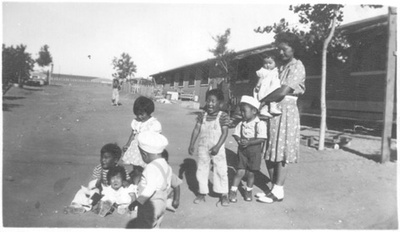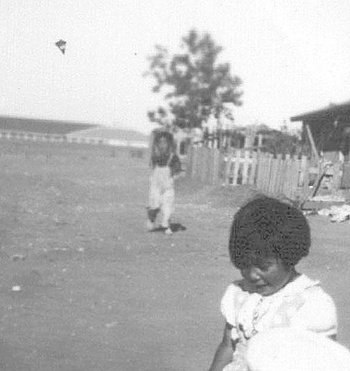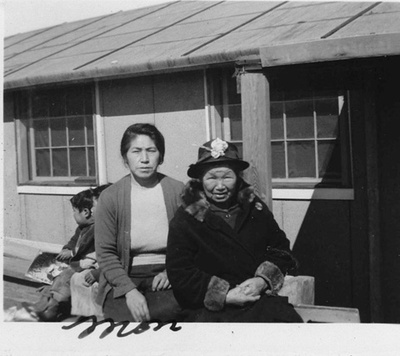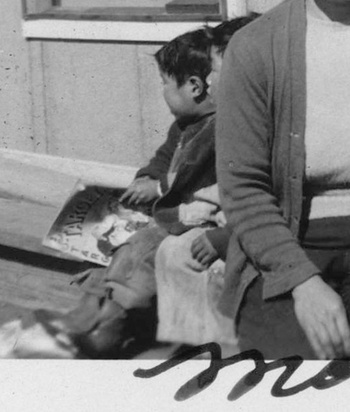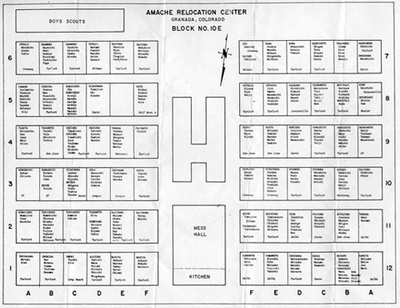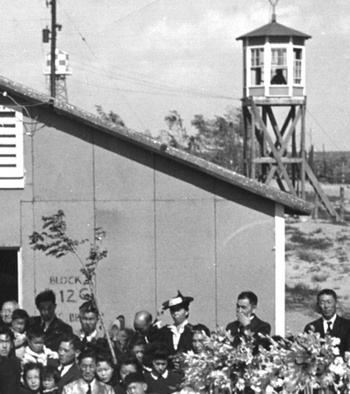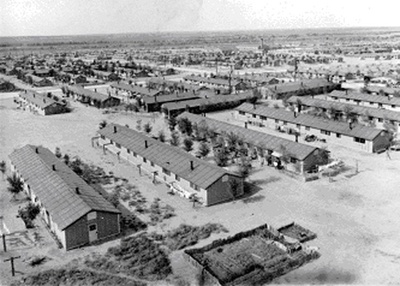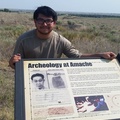Borrowing from the title of popular television show, CSI: Miami, the term crime scene investigation could apply to the planned archaeological dig of Amache, one of ten concentration camps that was used to imprison America’s Japanese during WWII. This investigation will not seek out victims, suspects, motives, evidence and witnesses. Most of us already know the shameful details of that “crime.” In these War Relocation Authority camps, the victims were the prisoners and the unlikely perpetrator, the United States of America.
This coming 2008 summer, Dr. Bonnie Clark, Assistant Professor, Department of Anthropology, University of Denver will lead this archaeological investigation as part of the Field School in Historical Archaeology & Museum Studies program she designed and organized for June 16 – July 11, 2008 in close cooperation with the student based Amache Preservation Society, founded and guided by Granada High School history teacher, John Hopper.
Dr. Clark, a historical archaeologist, was drawn to working at Amache, located near the town of Granada, Colorado upon learning that it may have the greatest archaeological integrity out of the ten WRA camps. There she hopes to discover evidence of the cultural life of the camp internees.
Dr. Clark’s Field School partners will be DU colleagues, Brooke Rohde, Curator of Collections at the DU Museum of Anthropology and Dr. Christina Kreps, Director of Museum Studies. The program will include University of Denver and Granada High School students along with interested volunteers, especially former internees and their family members. As a former internee, I will be volunteering with my 16-year-old grandson, Dante Hilton-Ono, who I hope will learn from this unique opportunity of visiting and working on a site of significant importance to his family and American history.
In anticipation of spending two-weeks as a volunteer at Amache, I began conducting a personal CSI of my own pouring through our grandmother, Owai Okamura; mother, Kimiye (Okamura) Ono and aunt Yuki Okamura’s photograph albums of camp pictures taken sixty five-years ago. Pictures I’ve seen over and over many times, but this time I wanted to determine as best possible exactly where each picture was taken and get my bearings for this rare visit.
Included in my family’s collections of photographs were: Amache family directories, school year book albums, a coop album, copies of Pioneer (newspaper) and camp maps. Using these, I am trying to put myself into the time period when I was in camp from the age of three to five years-old. Let me share some of what I found.
In one picture that I’ve seen many times before, I noticed that my older brother Stanley Kazumi (in overalls), cousins and friends were grouped between barracks with my Uncle “Butch” Masuoka’s teen sister, Margaret watching over them. I didn’t think much about why I wasn’t in the picture, but upon closer examination with renewed purpose, I discovered that a distant figure running towards the group is me! I’m fairly sure because I’m wearing identical overalls to my brother that we wore in other photos as well. In the enlarged view, I noticed what appeared to be a photographic artifact in the sky, but enlarging it more, I’m convinced that it is a kite, which I’m flying! To discover this 65-years later is really a blast! “A blast from the past!”
In another snapshot, I never noticed before that my brother and I were sitting behind our Grandmother Owai Okamura (L) with an unidentified friend. Upon enlarging this, I noticed that I was holding a kite?! . . . No, on closer inspection I discovered I was holding a Target comic book. I used Google to look up "Target" and discovered that it was a comic book in the 40’s.
I’m telling about the personal excitement of discoveries to make a point. If you look more closely at old family pictures, there is potentially much more to learn. Look at the background, at the clothes, plants, architecture, who’s there and who’s not and any other objects. In reference to further determining where photographs were taken, look for numbers on buildings, the location of landmarks, such as water and guard towers, chimney stacks. Look at the shadows for clue as to the time of day and direction.
I noticed that in a lot of the photographs taken near our barracks, a wide expanse of open space appeared in the background. I do remember walking across the open field with an uncle to an auditorium. The Amache map shows our Block 10E was next to an open baseball field and beyond that, the Amache High School, where I presume an auditorium existed.
For additional aid to identifying location of pictures, we were lucky that my Auntie Yuki, who worked for the Co-op had in her album a Block 10E diagram with names entered for the occupants and where they came from. Note: the North arrow is pointed South matching the compass arrow direction on the Amache map, a clue to the orientation of the block and the barracks.
My grandmother, Owai Okamura and family were in two units, B & C in Barrack 6. My brother Stanley & I were with my grandmother because our mother was in a TB sanitarium in Boulder, Colorado, while our father Sam Masami Ono was working in Denver with the British Political Warfare Mission jointly with the U.S. Office of War Information broadcasting to Japan. Consequently, our sister Sandra Yoko, 2 was placed with our Auntie Yuki and our baby brother, Victor Katsumi, 2-months-old, was in the care of our paternal grandparents, Kinsuke and Kotora Ono in Block 12F. It was during this time that some of the photographs of us in Amache were taken.
This 1943 photograph taken of the Buddhist Church barrack, located in Block 12G, shows the funeral of Uncle Hiroshi, the oldest son of my grandparents, Suyeichi and Owai Okamura. He died as the result of a camp construction accident at the age of 27, leaving behind my Aunt Dorothy, Cousins: Kenneth Hiroichi, 4; Phyllis Yaeko, 3; and one month later, Carol Hiroko was born never to know her father. Grandfather Suyeichi was released from the Sante Fe, New Mexico Justice Camp and allowed to attend. Following this (2-weeks later) he was sent back, forced to grieve alone.
On this cropping of the above photograph, you can see the water tower behind the power pole and more obvious to the right is a guard tower. Also note the Block 12G stenciled on the designated barrack for the Buddhist Church.
This water tower could be seen from virtually anywhere in Amache as is seen beyond the Buddhist church in the picture above. It is from this tower that over-view of Amache photographs were taken. (example, seen below) According to the Amache map it is in the South East corner. Hopefully, locating any remnants of this tower will serve as a landmark for further orientation.
In concluding this mini “crime scene investigation,” hopefully, I have shared some tips in looking at old photographs that may help you in your own personal investigation. The research doesn’t necessarily have to be of a crime, but rather the exploration and exciting discovery of more intimate details of family history.
© 2008 Gary T. Ono


